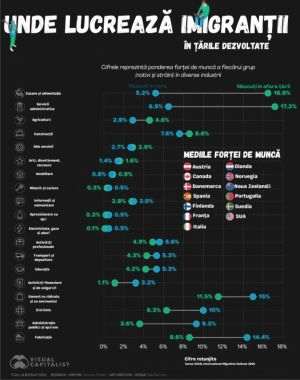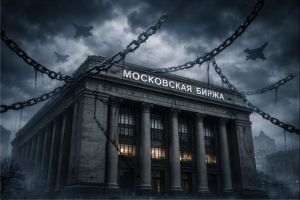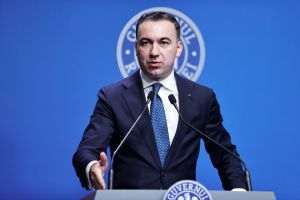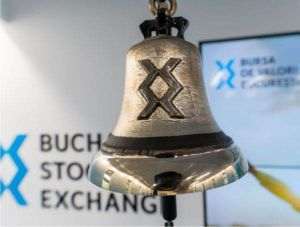The lending boom in the second half of the last decade was caused by a combination of factors, with the most important being, according to the opinion of the NBR, the overall trend towards deregulation and laissez-faire worldwide, the full liberalization of capital movements (a requirement for joining the EU), as well as the public's lack of financial education.
The presentation of these factors has constituted the introduction to a new lesson in financial education in the seminar organized by the National Institute of Magistrates (INM), with the participation of representatives of the National Bank of Romania.
Given the premise of "lack of financial education", supported by the results of a relatively recent study by Standard & Poor's, which places Romania on the 124th position in the global ranking of financial education, out of a total of 143 countries reviewed. The S&P chart was devised based on answers to questions such as risk diversification, the effects of inflation or compound interest.
Under these circumstances, the issue of the presentation "What should a loan applicant know?" is, even now, of major importance.
So what should someone who "aspires" to be a bank debtor know? The first rule mentioned by the NBR was "never borrow in another currency then the one you are getting paid in".
Nothing unusual so far, because the recommendation has appeared several times in the press, including from governor Mugur Isărescu, during the years of lending boom.
From this point on, things start to get interesting. "Never borrow over a long period of time (more than 10 years)", because "through interest compounding, you pay 2, 3 or more times the initial price of the asset", says the second rule, which is illustrated with an example of compound interest calculation.
Under that same section it is mentioned that the Romanian state has borrowed, at the end of the 19th century, for a period of 90 years, which has represented "a huge mistake in financial terms".
Even more interesting is the third "commandment" for debtors, which states "never borrow money at a variable interest rate (adjustable by a variable amount such as ROBOR or LIBOR)".
Unfortunately, the NBR officials have "forgotten" to promote these two recommendations as well during the period of explosive credit growth. Even nowadays, they are still not part of the public discourse.
You will say that if they were applied, no one would be able to buy a home by borrowing, and the number of loan applications would collapse.
It is true, but it is precisely the irresponsible neglect of these rules (author's note: when exactly did the NBR discover them?) has represented one of the determining factors of the lending bubble in the second half of the last decade and the delay of the return to more prudent lending principles endangers not just the creditors' solvency, but the stability of the banking system as well.
Also true is the fact that home prices wouldn't have reached the stratosphere without the lending boom "overseen" by the NBR, a level which was completely out of touch with that of income.
It is hard to believe that such an explosive growth of lending, especially among households, would have happened, had a law of personal insolvency existed, at least starting with mid-last decade, which also included the giving in payment.
Such a law would have been imperiously necessary, especially amid the shortcomings of the loan applicants' financial education, and aside from keeping the banking system in check, it would have contributed to reducing the lack of financial education.
But "lack of financial education is evident not just among the relatively poor Romanians (loan applicants), it can also be noticed among the wealthy ones, who have significant bank deposits", the presentation of the NBR states.
In this case, its form of manifestation takes the form of creating bank deposits that exceed the maximum guaranteed amount. NBR data shows that in 2016 there were approximately 23,000 bank deposits that exceeded 100,000 Euros, which is the maximum guaranteed amount.
The lecturer of the National Bank of Romania pointed out that there are 36 banks in which to create distinct accounts of up to 100,000 Euros and reminded of the Cyprus precedent, when the bail-in procedure was used to extinguish banks' debts.
I don't know if the seminar participants enquired why the National Bank of Romania didn't do more to publicize the three rules that loan applicants have to abide by.
Perhaps answers to that question were provided in another presentation in the INM seminar, called "What has the NBR done to prevent the crisis, before 2008?".
After dividing economic policies, including the monetary ones, in two categories, procyclical and anticyclical, the representatives of the NBR stated that an internal study of the NBR, of March 2013, tried to determine the procyclical or anticyclical nature of the monetary policy of the boom period (2003 - 2008) and the recession (2008 - 2012).
Monetary policies are procyclical when they emphasize growth during the boom period or the contraction during the recession period and anticyclical when they act "with a view to reduce growth or contraction".
The study followed the evolution of the minimum required reserves (RMO), provisions, the oversight of non-banking financial institutions (IFNs), capital adequacy and the measures for limiting credit risk.
The conclusion, that the "regulations initiated by the NBR during the lending growth period (2003 - September 2008) had a predominantly anticyciclical nature, meant to temperare lending", while "a number of regulations imposed by the international institutions and assumed by the NBR had a procyclical nature, in the March 2007 - September 2008 sub-period", basically releases the NBR, the money issuer and overseer of the Romanian banking system from any liability concerning the loan bubble.
But if the initial regulations had an anticyclical nature, how was it possible for the non-governmental credit to increase almost five times between 2003 and 2007, when the nominal GDP, that the nominal revenues in the economy depend on, increased approximately 2 times?
According to data from the NBR and the INS, between 2000 and 2016 non-government borrowing increased almost 30 times, amid an increase of the nominal GDP of almost 9,4 times.
The presentation also states that along with other measures with a cyclical or anticyclical nature concerning lending, three increases of the rate of the minimum mandatory reserves for foreign currency resources were implemented between August 2004 - July 2006, from 25% to 40%, while the minimum reserve rate for resources in lei was increased from 18% to 20%, after a decrease from 18% to 16% between August 2005 - June 2006.
The NBR thinks that the RMOs have a strong anticyclical nature, that their increase strongly results in a decrease in lending, respectively. The 40% and 20% rates have been applied between March 2006 and June 2009 for foreign currency resources, and July 2006 - October 2008 respectively, for resources in lei.
The "prudential" nature of the minimum required reserves is contradicted, however, in the Q1 2014 quarterly bulletin of the Bank of England, as part of the study "The creation of money in modern economics" (author's note: the analysis is attached to the article "The understanding of the nature of money is more important than the understanding of financial products (II)", BURSA, May 6th, 2014), which describes in detail the manner in which banks create, out of nothing, most of the money in the economy, in the form of deposits resulting from the granting of loans.
The same source shows that "the theory of the monetary multiplier does not represent an accurate description of the manner in which money is created", as "the minimum reserves deposited with the central bank do not represent a restriction on lending".
The list of measures passed by the NBR until 2008 goes on with what has been implemented after 2008 as well. This also includes the decisions of other authorities, such as the launch of the "First home" program, in 2009, or the government ordinance concerning the protection of bank debtors, by "ensuring a better transparency of the costs of financial services".
But why was a necessary crisis needed, for other national authorities to pass measures for protecting the consumers of financial services?
Also, why did the NBR agree to the "First Home" program, when the extremely low downpayment itself is enough to make those loans qualify as "subprime" right away?
The question is of course rhetorical, especially since until 2013, the loans granted as part of the program did not meet any of the three rules enumerated by the NBR, and since the exclusive granting of loans denominated in lei, the rules that say "never borrow over a period longer than ten years" and "never take out a variable interest rate loan".
Unfortunately, the presentation does not mention why the continuation of the program was needed after the recession ended in 2012, given its strong anticyclical nature.
If the measures discussed in "What has the NBR done to prevent the crisis, before 2008?" actually had any effectiveness, then all the effort to avoid the burden of responsibility would not have been necessary. Thus, the question can only have one answer.
The verb "to prevent" is defined as "taking precautionary measures ahead of time, to remove something unpleasant".
According to this definition, the NBR did nothing to prevent the crisis, and the title of the presentation given before the magistrates was probably just a form of subtle self-criticism.
Note: The author thanks the PARAKLETOS association for making available the materials presented in the seminar organized by the INM.





























































